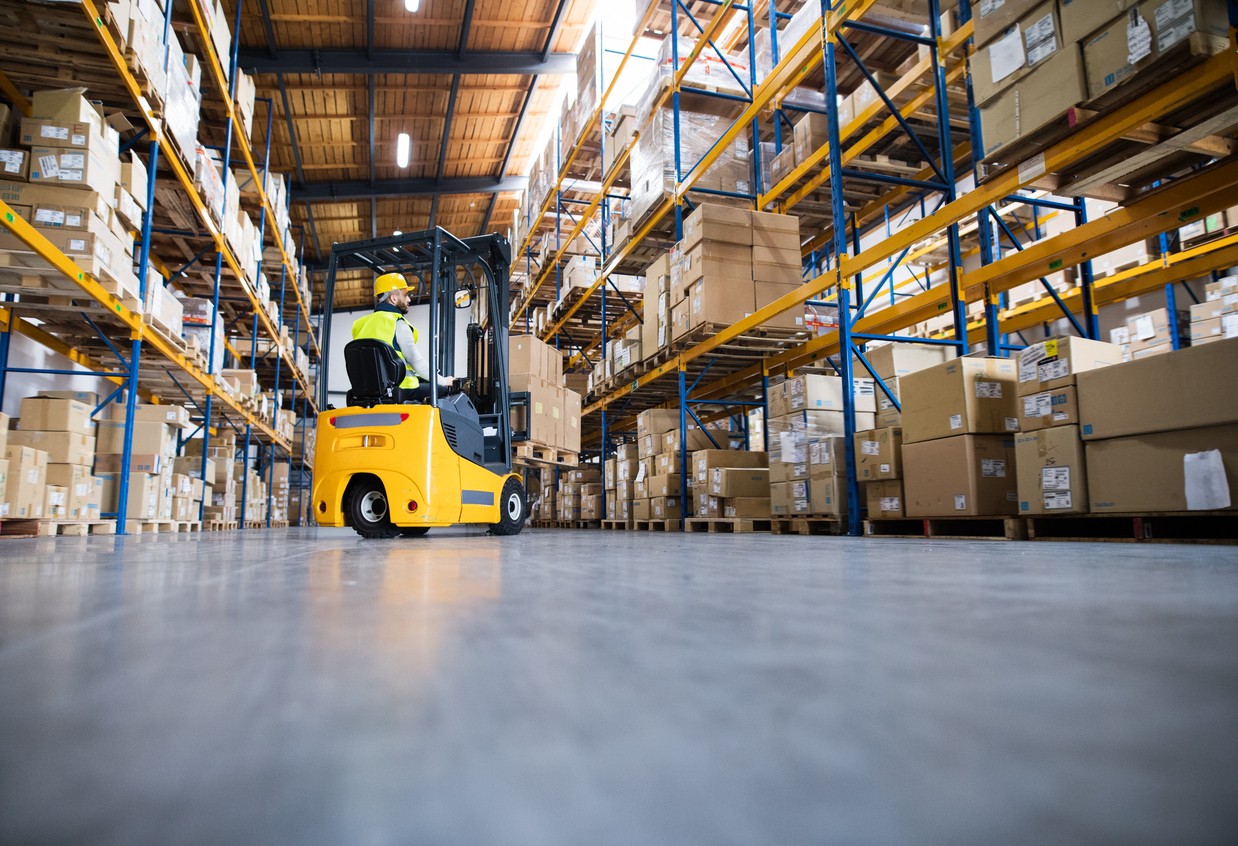Warehouse operations are made up of many different moving parts. Aside from the vehicles and employees, there’s also company and business processes, all of which rely on and generate huge amounts of data each. It’s a complex environment, and it’s only getting more complicated to navigate.
Recent reports have shown that warehouses around the world are seeing their operations becoming more complex, a knock-on effect of the rise in demand for, and needs of, the e-commerce and digital services industries.
In fact, it’s being predicted that warehouses will continue to expand their operations dramatically over the next five years. Current estimates say that 60% of warehouses are projected to bring more automation into the workplace to aid staff in their daily work, while a fairly astonishing 70% will increase Ai-driven solutions.
In either case, that’s a sizable increase in resources in a relatively short space of time, and all of those extra resources require new and updated management processes to keep them working smoothly. For that to happen, it’s important that data systems across the warehouse operate in tandem.
What happens when data systems in warehouses operate separately
If vital systems remain unconnected and siloed while warehouse operations grow, the effects can become compounded and cause serious headaches.
Systems operating independently of one another frequently cause bottlenecks and delivery delays due to discrepancies in stock levels and other communication issues. If inventory and warehouse management systems are not synced, it becomes easy to oversell unavailable products or miss sales opportunities by not having sufficient stock of popular items.
Similarly, not linking your systems makes it less likely you will spot trends and recurring data that could help optimize sales and business performance. Frequent stock shortages at particular locations are a good example, but one that is easily missed without unified data across warehouse and inventory management giving immediate, accurate, insights.
And that’s not to mention other issues, such as the processing errors that so easily arise from transferring data between platforms, especially when carried out manually. These errors quickly impact fulfillment, something that ecommerce businesses cannot afford.
Finally (and perhaps the most potent argument for synchronising and integrating data systems), independent processes inflate operating costs. Without the ability to update and report in real-time, employees spend more time manually fixing errors, checking inventory, and correlating the data. It’s inefficient, and not reliable enough to keep a growing industry like warehousing on track.
What are the different data systems used in warehouse operations?
Warehouses are not a singular entity. They actually more closely resemble an ecosystem, filled with individual elements that rely on and impact each other every day.
That’s what a warehouse is made of, disparate people, equipment, and the data needed to make each work without getting in the other’s way.
In any given warehouse operation, you can expect to find data systems relating to:
Vehicles and mobile assets
Every vehicle and mobile asset in a warehouse comes loaded with individual data. As well as inventory details, there’s compliance data, emissions reporting, Original Equipment Manufacturer (OEM) diagnostics, maintenance records, insurance details, and more. That’s a lot of data, especially when it’s multiplied by the entire number of fleet vehicles.
Company and business processes
When it comes to company and business processes, there is a wealth of essential data and processes that must be taken into account. There’s often a customer relationship management (CRM), the warehouse management system (WMS), enterprise resource planning (ERP) software, a transportation management system, and inventory management all occupying the same space.
Employee data
Even the employees working in the warehouse have their own dataset. For a start, there’s performance management data, payroll, and compliance. Then there’s the likes of safety and wellbeing records, time management, training and coaching undertaken, and human resources information to reckon with..
As you can imagine, that’s a lot of data across multiple data systems. It can quickly become overwhelming, leading to the issues we’ve covered already. But what’s the solution?
Well, the solution is to integrate those data systems under one umbrella. The solution is Powerfleet.
What is the importance of integrating data systems?
As we’ve seen, having operations split across fragmented systems is a recipe for inefficiency.
Response times slow, errors become more likely, and growth is restricted. Integrated solutions, such as Powerfleet address all of these issues and more, giving warehouse operations the power to work smoothly at all times.
Here’s how Powerfleet does it:
Unifying operations across the board
Powerfleet keeps all of your data flowing in the same direction to streamline operations. Linked warehouse management and inventory systems connect storage operations with stock tracking, providing accurate, real-time data to help you see sales, returns and shipment figures at a glance and without the need for manual entry.
Data Integrity
By integrating your data sources, you also eliminate the errors that are an inherent risk of manual data entry. Instead, you have access to a single source of truth; a centralized repository of all the most up-to-date data from across every aspect of your business, all stored and managed in one place to protect its integrity.
Operational efficiency
Integration allows for better communication between warehouse operations and inventory systems, giving businesses greater visibility into stock levels, incoming items, and those in need of replenishing. All of which makes errors such as overstocking or overselling less likely, increasing operational efficiency as a result.
Smoother order fulfilment
Another key benefit of integration is that order fulfilment becomes more dependable. By automating workflows across picking, packing, and shipping, delays and errors are reduced. An order is placed, the system notifies the warehouse, and the operation to dispatch it is begun immediately and without any middlemen. It’s as simple as that.
Lower costs
Streamlining and integrating operations means that the associated costs of each element is reduced. By using automation to update stock, process orders, and reorder products, your team spends less time doing it manually.
Real-time decision making
As well as the stock level information we’ve already covered, integration provides warehouse operators with other valuable insights to aid real-time decision making. For example, integrated systems can provide a more indepth look at available space and usage within the warehouse, allowing operators to create a more efficient storage plan.
Maintenance predictability/ planning
A computerized maintenance management system (CMMS) tracks and monitors the state of all the machinery and vehicles in a warehouse.
By using a CMMS alongside your larger operating systems, you can view a vehicle’s maintenance record at-a-glance, schedule maintenance and allocate replacement resources. It’s also possible to carry out repair pre-emptively by looking at machinery with heavy usage, assessing wear and tear before a failure occurs.
Integrated OSHA
Powerfleet makes it easy to adhere to the safety standards set by the Occupational Safety and Health Administration (OSHA) by providing recommended pre-use safety inspections, as well as driver vehicle inspection reports (DVIR) for operators to complete before and after use.
Technology integration as a pathway to automation
Automation is the ultimate route to greater efficiencies, and integration is the path to automation. By connecting all of the various systems and datasets in the warehouse operation, the flow of data, instructions, and operations is unimpeded.
There’s less chance of user-error, less time carrying out manual actions, and no waiting in between order and action. Just a more efficient, completely connected operation.
How do Powerfleet’s in-warehouse solutions integrate with different data systems?
By bringing the data from assets, people, vehicles, operations, and AIoT devices together on a single platform, Powerfleet transforms the way warehouses do business.
Safety, maintenance, logistics, efficiency, and productivity are all optimized thanks to device agnosticism; drawing in data from all of the different sources present in a warehouse ecosystem and feeding it back through a unified SaaS platform. That way you can see the insights you need at any time, anywhere, in a way that helps complete the job at hand.
To see how integrating your warehouse data and operations can enhance efficiency and reduce costly errors. Book a Powerfleet demo today.









